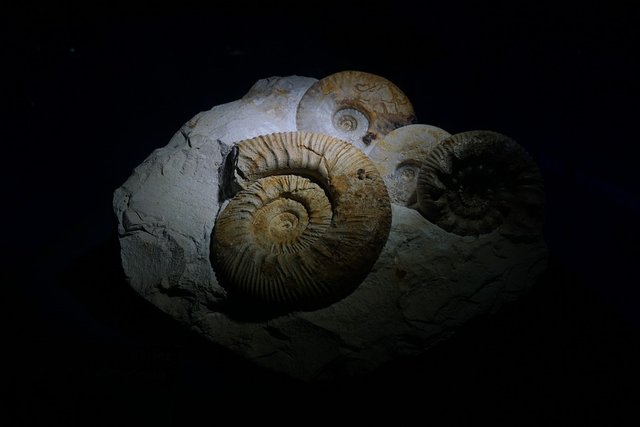Steno, the religious scientist - A father of Science (part 1 of 2)
In the beginning of 1665 the intellectual elite in France gathered to hear the speech a young anatomist called Nicolas Steno. His discoveries made him famous.
Portrait of Steno as bishop - Wikimedia Commons
He was going to talk about where was the human soul in the human body. Descartes said that it was at the pineal gland and imagined it there, pulling motor nerves attempting to control the body as a marionette. But he arrived to that conclusion without any anatomic observation. Steno, on the other hand, was quite a guru of dissection and had a special skill whenever something needed to be found with a scalpel in hand, that, allowed him to find the most evasive anatomic findings.
The conference started: He was going to examine some of the other potential dwellings, for instance, the brain. Since it was a fiber quite difficult to dissect, as he said, the structure was target for the craziest assumptions and speculations. In another conference, he proved in a public dissection of the pineal gland that it was immobile and that it was adhered to the peripheral tissues. Descartes' followers refused to accept the evidence. Regardless of this, Steno approved the the cartesian philosophy and claimed on paper: I do not condemn Descartes for his method, but for ignoring it himself.
Science, as Steno said, had to be based on the observation of Nature, and not on pure reasoning. No matter how elegant looked. It could not be influenced by prefixed methods or philosophies, it had to follow the path the observations lead into.
The little that people knew about the brain at that time could not be used for any kind of speculations about how it worked. And, about the human soul, perhaps science was not the right tool to answer that kind of question.

Steno did lots of things. Around that time, people did not know how muscles work. What made muscles move? It was a common thought that they were balloons that were inflated by a vivifying spirit. Steno, dissected muscles in detail and arrived to the conclusion, contrary to that time's scientists, that they were nothing else but contractile fibers. He also claimed that the hearth was not a cauldron of boiling blood: His observations showed him that it was just a muscle. Around that time he also did one of his most important discoveries: The existence of the female ovules.
A year after that conference, Ferdinando Medici, Galileo's patron, invited Steno to go to Florence because in the coasts of Tuscany a giant shark was found, and he wanted him to dissect it. This was going to be child's play for Steno, but he found something that called his attention and would change the path of his scientific life: The shark's teeth were identical to some medicinal stones called glossopetrae, "petrified tongues" (dragon tongues!); that, as it was believed, grew in there or fell during storms.
From ancient times it was known that there was rocks with the shape of seashells or other marine creatures in the mountains, far from the sea. How was it possible for shells to be there, high up in the mountains? Yet, there was another question: How did they embed in the rock? The same question must have haunted Ferdinando too, since he financed Steno's expeditions over Tuscany, he picked up a lot of fossils and studied the bedrocks in the area.

There was some that claimed that they were the remains of a monumental flood, perhaps the one mentioned at the Bible. But in some places there were so many that it was unlikely to have a flood as origin. In that time, Bible scholars dated the Earth in 6000 years of age according to the book of Genesis. The most plausible explanation was, therefore, that they were nothing but rocks that grew off the land. As a matter of fact, Linnaeus accepted the biblical tale, but his reasoning told him that a 200 day flood could not have moved that many living creatures so far inland while covering them in sediments (it just, wasn't enough time). He wrote something like: "Anyone that credits this to the biblical flood, that came and left in no time, is truly someone stranger to science... and blind, because he sees through other people's eyes, if he even sees something". For the contrary, he thought that the Earth was initially covered by water, and it receded over time leaving dry land and fossils behind as evidence. Yet, it was clear that this needed more than just 6000 years to happen.
...
And now, you'll have to wait until tomorrow (or make a nice google search) to find out how of the fathers of science became such!
Stay tuned!

If you liked this post and its informal way of talking about sciences, please, follow me for more!
Leave a comment either for good or for bad reviews. I take everything as constructive, and I really appreciate the feedback, even from trolls (at least a troll read it before being himself!).
Copyrights:
All the previously used images are of my authory or under a CC0 license (Source: pixabay), unless openly stated.
All the Images created by me possess a WTFPL licencing and they are free to redistribute, share, copy, paste, modify, sell, crop, paste, clone in whatever way you want.

Those "bible scholars" would happen to be wrong with their conjecture. It takes less than 15 min of reading to notice that a pre-Adamite civilization existed. Genesis chapter 1 says that on the 6th day man and women were made. Then in chapter two, something went wrong and God had to start all over again with Adam and Eve.
As I mentioned in my Top 10 Crazy Things I Believe are True we are not the first advanced civilization on Earth.
10 min, if you read very slow... At genesis itself "another town" is infered.
This is later paliated by adding "those 2" were god's creations, the rest, were "beta versions" that the loving god did not want to wipe off earth.
This, actually (something you will NEVER hear from a religious fan), has some scientific backup, since we are the result of the mixbreeding of neanderthals and homo sapiens.
http://www.livescience.com/42933-humans-carry-20-percent-neanderthal-genes.html
Actually it needs both, in my opinion!
Consider that by "pure reasoning" people thought that lightning bolts were made by Zeus.
Another I recall, a table of elements of less than a dozen components (was it 7?) where "clay" was one of them.
Let's remove the word 'pure' then (this word does not mean anything anyhow).
This is actually not what I meant :p
remember, I'm quoting Steno, he IS contradicting the scientific method. Since he did not build hypothesis he limited his knowledge to what he could measure and see.
Indeed :)